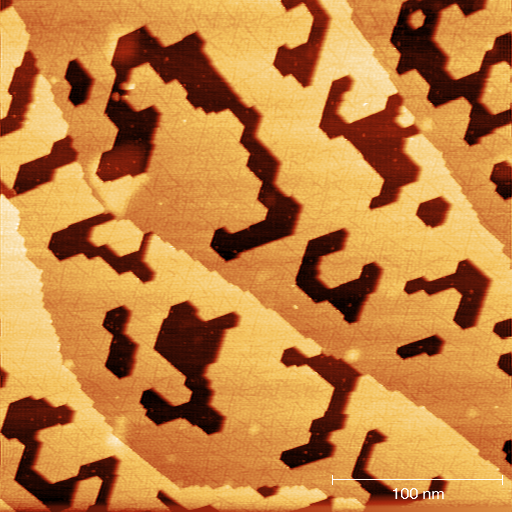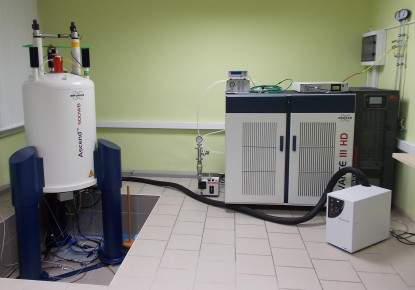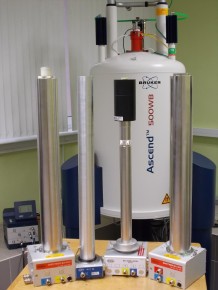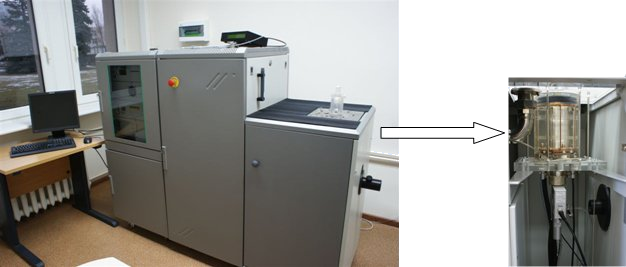Research
Goals
The main scientific goal is to utilize selforganisation effect in order to fabricate new materials based on the highly ordered arrays of nanoparticles (mainly Fe, Co and Ni). Subsequently, to explore their catalytic, and more importantly, electron and magnetic properties. The examination of the properties, resulting from a selforganisation process of the nanodots or nanorods, will enable a deep insight into the physics of the low-dimensional systems: micromagnetism of the magnetic domains and domain walls, magnetic anisotropy at a zero and one dimensional systems. Additionally, MBE-fabricated systems may be utilized in e. g. nanoelectronics, catalysis and magnetic memories
Scientific profile
Preparation of the ultrathin films of metal oxides and metal-oxide nanostructures, ultrathin films and magnetic multilayers with the PVD techniques in the UHV conditions. Conducting the measurements of different physical properties and structural examination with the use of STM, LEED, RHEED techniques. The composition analysis is determined via XPS (ESCA). The examination of the metallic nanostructures originating from the selforganisation processes.
Scientific programmes
- NCN Project - MAGNETyczne nanOstruktury tleNkowe (MAGNETON): badania eksperymentalne i teoretyczne (Magnetic Oxide Nanostructures: experimental and theoretical investigation) (2013-2016), leader - dr. M. Lewandowski
- MNiSW Project - Wzrost i właściwości nanocząstek Au, Co i Ni na powierzchni cienkich warstw tlenków żelaza na Ru(0001) (Growth and Properties of the Au, Co and Ni Nanoparticles on the Ultrathin Iron Oxide Ffilms on Ru(0001)(2012-2015), leader - dr. M. Lewandowski
- Main project - Nanostruktury metaliczne otrzymywane metodą samoorganizacji(Metallic nanostructers resulting from the selforganization) (2012-2015), leader - dr. hab. T. Luciński, prof. IFM PAN
Achievements
- By perpendicular evaporation onto Ag(111) single crystal the arrays of iron nanorods and nanoislands (height of 60 nm) were fabricated
- The structural mismatch influence on the growth and properties of the ultrathin layers of iron oxides on the single crystals Pt(111) and Ru(0001) was examined [M. Lewandowski et al., “Nanoscience Advances in CBRN Agents Detection, Information and Energy Security”, Eds. P. Petkov et al., Springer, 319 (2015)]
- The investigation of the Moiré-type Fe and Co oxides structures, promoting the selforganization of the metallic particles (Au, Co Ni). The systems based on the ferromagnetic nanoparticles (Co and Ni) are particularly interesting due to their potential applications. If self organized, such materials containing the arrays of magnetic nanodots or nanorods may be applied in the electronic devices (the electron transfer) or catalysis (electrically charged Au nanoparticles)
- Chemical composition determination of the multiferroic BiFeO3 nanoflowers and the influence of the synthesis time on their composition





